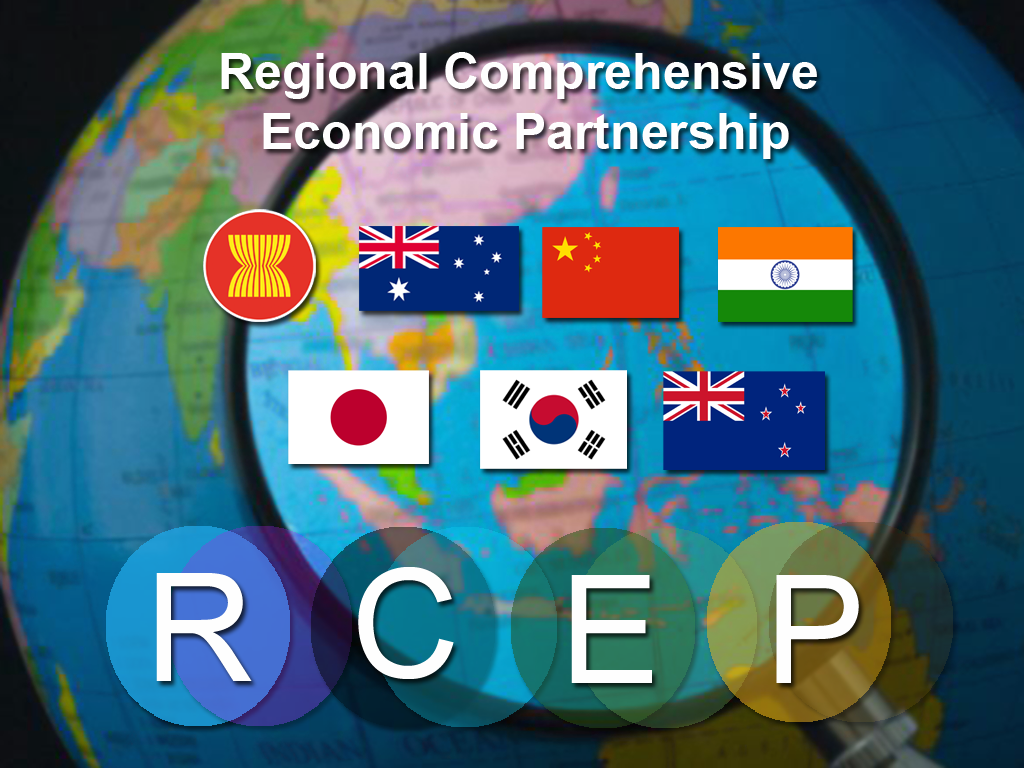The signing of the RCEP (Regional Comprehensive Economic Partnership) agreement on 15 November was a geopolitical coup for China, at a time when the United States was still in the throes of electoral disputes. That US allies Japan, Australia and New Zealand (all proponents of the Obama-era Trans-Pacific Partnership or TPP that had consciously excluded China) chose to join RCEP—while the US remains outside the successor CPTPP—sealed the sweetness of China’s coup.
India, however, wisely chose to stay out of the RCEP a year ago. India already has Free Trade Agreements (FTAs) with ASEAN (effective from 1 January 2010), South Korea (also 1/1/2010) and Japan (since February 2011), and is close to concluding one with Australia. Thus, joining RCEP would essentially involve an India-China FTA—geopolitically absurd after this year’s aggression by China on the India-Tibet border.
And while China has a seemingly-lower average applied import tariff of 9.8% (compared with India’s 17.1%), China applies a myriad non-tariff barriers (NTBs), with as many as 1,516 “notifications” that restrict imports (compared with just 171 by India). FTAs rarely tackle NTBs, and the low-quality RCEP certainly doesn’t.
China also pays its exporters hidden subsidies, primarily in the form of unlimited credit to state-owned enterprises (SOEs) that have resulted in massive global over-capacity in key industries like steel, aluminium and cement. Ironically, India is now the second-largest global producer of all three products, but China produces well over half of all global output of all three, and dumps its excess supply on the rest of the world below China’s own cost of production.
Lower global prices (arising from China’s over-production) squeeze out other producers, cementing China’s dominance. In recent years, this has also happened in many new industries like solar-panels, 5G telephony and artificial intelligence, causing the rest of the world to sit up and take countervailing action. The RCEP fails to address any of these concerns, effectively giving China carte blanche to pursue its version of unfair trade.
Japan and South Korea, which previously did not have any FTA with China, do gain additional access to the Chinese market, since 90% of their exports to China will now be tariff-free—and Japan also gains additional access to the South Korean market, where the average applied tariff was 13.4%, but where most imports from RCEP countries will now enter tariff-free.
Compared to the CPTPP, the RCEP is a “low-quality” FTA, as it has a weak enforcement (and dispute settlement) mechanism. This will be to China’s advantage if it chooses to adopt the retaliatory tactics to restrict imports it adopted against Japan (over the Senkaku islands in 2016), South Korea (over its deployment of THAAD or Terminal High Altitude Area Defence missiles in 2107) or Australia (over its candid remarks about the Wuhan Coronavirus this year).
There will be scant redress for RCEP members subjected to such arbitrary Chinese actions, or indeed the sort of mutually-destructive actions used by Japan and South Korea against each other during the past year. RCEP lacks strong protections for IPR (intellectual property rights), and has no chapters on government procurement, export subsidies, labour or environmental standards—all of which benefit China and Vietnam to the slight detriment of Japan and South Korea (which have IPRs to protect in particular).
Ironically, ASEAN (Singapore, Malaysia, Indonesia, Thailand, Philippines, Brunei, Vietnam, Myanmar, Cambodia and Laos) played the key role in facilitating RCEP, but will gain little beyond the symbolic satisfaction of seeing the RCEP signed. ASEAN already had FTAs with all the non-ASEAN contracting parties, as well as an intra-ASEAN FTA. So the only benefit to ASEAN members comes from the harmonization of rules of origin (ROO) and goods tariffs across a broader swathe of countries. Small and medium enterprises (SMEs) in ASEAN and elsewhere will see some benefit from the elimination of the “noodle bowl” of complicated ROO for different FTAs, which were impossible for SMEs to monitor and administer.
China-centred supply chains were already beginning to switch away from their China focus, a process that is being hastened by the experience with Covid-19. Given India’s FTAs with ASEAN, Japan and Korea, global supply chains will have few difficulties in integrating India with those economies and Taiwan—another major hub of computer/electronics manufacturing.
By staying out of RCEP, India has strengthened incentives to decouple supply-chains that incorporate China, and encourage these to redeploy around India and ASEAN. That India offers a far more flexible labour market now than in the past will only redouble the speed with which global manufacturing supply chains begin to centre around India. Staying out of RCEP will prove a huge boon to India over the next decade.
Prasenjit K. Basu is a former Chief Economist for India & SE Asia at Credit Suisse First Boston, and author of the award-winning book “Asia Reborn”.
India lost nothing by staying out of RCEP
- Advertisement -

